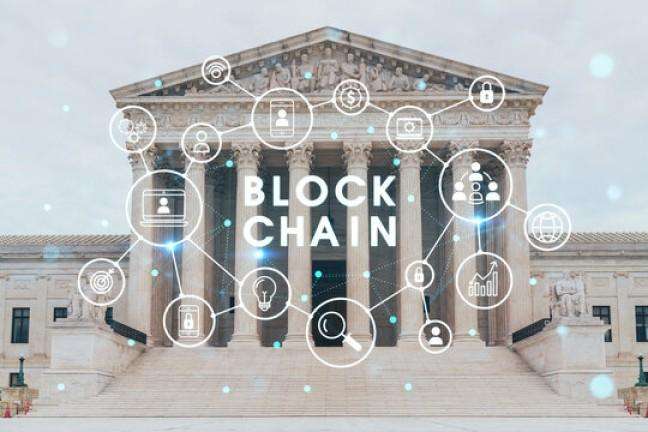The idea of blockchain technology has been around for over a decade now, and it has steadily evolved from being the foundation for cryptocurrencies like Bitcoin to a platform for decentralized applications and smart contracts. However, as the blockchain space grows, so does the need for improved efficiency, scalability, and decentralization. One such concept that has been gaining attention is the “Abelian Blockchain,” a term that might not yet be as common as traditional blockchain concepts but promises significant advantages.
I’m going to dive deep into what makes an Abelian Blockchain distinct, how it works, and why it might just be the next step in the evolution of blockchain technology. Along the way, I’ll compare it with traditional blockchains, illustrate its structure, and highlight its potential benefits. So, let’s begin with a basic understanding of what an Abelian Blockchain is and why it might be important in the context of modern distributed systems.
Table of Contents
What is an Abelian Blockchain?
At its core, an Abelian Blockchain is a concept that integrates the mathematical principles of Abelian groups with the traditional ideas of blockchain technology. To understand this, let’s first break down these concepts.
Abelian Groups in Mathematics
In mathematics, an Abelian group is a group in which the order of operations does not matter. More formally, for any two elements a and b in an Abelian group, the operation between them is commutative, meaning a * b = b * a. This principle of commutativity is what gives Abelian groups their name and is a fundamental aspect of the structure.
In the context of an Abelian Blockchain, the idea of commutativity plays a critical role in how transactions and data are handled. Traditional blockchains often face challenges with scalability and transaction order, but with an Abelian structure, transactions can be processed in a manner where the order doesn’t always impact the final result.
The Basics of a Traditional Blockchain
Before delving deeper into the Abelian Blockchain, it’s useful to review how traditional blockchain systems work. Blockchains like Bitcoin and Ethereum rely on a series of blocks, each containing a list of transactions. These blocks are linked together in a chain, and each block contains a cryptographic hash of the previous one, creating an immutable record of transactions.
In a traditional blockchain, transactions are processed in a specific order, and each new transaction relies on the state of the previous one. This ordering can sometimes create bottlenecks, especially as the network scales.
How Does the Abelian Blockchain Work?
The key feature of the Abelian Blockchain is its ability to process transactions without relying on strict ordering. Since Abelian groups operate on the principle of commutativity, an Abelian Blockchain is designed to handle multiple transactions simultaneously, without requiring them to be processed in a sequential order.
To illustrate this, let’s take a simplified example:
Imagine two users, Alice and Bob, who want to send transactions to each other. In a traditional blockchain system, Alice’s transaction must be processed first, followed by Bob’s. However, in an Abelian Blockchain, these transactions can be processed simultaneously. The system checks if the end result is consistent with the rules of the blockchain, regardless of the order in which the transactions were executed.
This non-sequential processing can lead to faster transactions, lower latency, and increased scalability, making the system much more efficient as it grows.
Key Advantages of an Abelian Blockchain
- Increased Scalability: By allowing for commutative operations, Abelian Blockchains can process multiple transactions at once. This eliminates the need to wait for one transaction to be fully processed before another can begin. In turn, this leads to increased throughput and reduced congestion on the network.
- Improved Efficiency: Since transactions don’t depend on a strict order, they can be executed in parallel, reducing the time it takes to reach consensus and process transactions.
- Reduced Latency: The ability to process transactions in parallel means that transactions can be confirmed faster, leading to reduced latency on the network.
- Enhanced Decentralization: By removing the need for strict ordering, the network becomes more resistant to centralization. Traditional blockchains can sometimes become bottlenecks due to the need for miners or validators to confirm each transaction in a specific order. Abelian Blockchains sidestep this issue.
- Lower Transaction Costs: Since transactions are processed in parallel, there is less congestion and fewer bottlenecks, leading to lower fees for users.
Abelian Blockchain vs. Traditional Blockchain
| Feature | Traditional Blockchain | Abelian Blockchain |
|---|---|---|
| Transaction Order | Sequential (transaction order matters) | Commutative (order doesn’t matter) |
| Scalability | Limited by block size and block time | Can handle more transactions simultaneously |
| Efficiency | Lower (due to sequential processing) | Higher (parallel processing) |
| Latency | Higher (due to order-dependent processing) | Lower (parallel processing) |
| Centralization Risk | Higher (miners or validators control order) | Lower (no strict ordering) |
| Transaction Costs | Can be higher (due to congestion) | Lower (less congestion) |
Potential Use Cases of Abelian Blockchain
The potential applications of an Abelian Blockchain are vast. Here are a few that stand out:
- Decentralized Finance (DeFi): DeFi applications require fast transaction processing, and an Abelian Blockchain could significantly reduce transaction confirmation times. This would be particularly useful in decentralized exchanges (DEXs), where speed and efficiency are crucial.
- Supply Chain Management: In supply chains, tracking goods in real-time is essential. An Abelian Blockchain could allow for multiple transactions (such as shipping updates, product transfers, etc.) to occur concurrently, improving overall efficiency and speed in supply chain networks.
- Voting Systems: One of the primary challenges in decentralized voting systems is the time it takes to confirm votes and reach consensus. Abelian Blockchains could drastically reduce the time needed for vote verification, ensuring faster and more secure elections.
- Healthcare Systems: Managing patient records across decentralized networks requires real-time processing of data. An Abelian Blockchain could help by allowing multiple updates (such as new test results, prescriptions, etc.) to be handled in parallel, improving the speed and accessibility of medical data.
Challenges and Limitations of Abelian Blockchain
While the Abelian Blockchain offers many potential advantages, there are still several challenges to consider:
- Complexity in Implementation: Building an Abelian Blockchain requires a deep understanding of both blockchain technology and mathematical structures. Implementing this concept in a real-world application would require significant research and development.
- Security Concerns: Traditional blockchains rely on a proven consensus mechanism (such as Proof of Work or Proof of Stake) to ensure the security and integrity of the network. The Abelian Blockchain would need to develop its own mechanisms to address potential vulnerabilities and ensure the security of transactions.
- Adoption and Interoperability: For an Abelian Blockchain to be successful, it would need to gain widespread adoption. This could be challenging, as it requires the integration of new technology into existing blockchain ecosystems. Additionally, interoperability with other blockchain systems would be a key consideration.
Future of Abelian Blockchain
As the world continues to embrace blockchain technology, I believe that the Abelian Blockchain holds the potential to address many of the current challenges faced by traditional blockchains. Its ability to process transactions in parallel, without the need for strict ordering, could lead to more efficient, scalable, and decentralized systems. However, the technology is still in its early stages, and there is much work to be done before it becomes mainstream.
In the coming years, I expect to see more research and development in this area, as well as the implementation of Abelian Blockchains in various industries. With continued innovation, the Abelian Blockchain could very well be a foundational piece of the next generation of decentralized applications.
Conclusion
The Abelian Blockchain represents a significant shift in how we think about distributed systems. By integrating the principles of Abelian groups, it opens up new possibilities for transaction processing, scalability, and decentralization. While it faces challenges, the potential benefits it offers make it an exciting area of exploration in the world of blockchain technology. Whether it will become the standard for future blockchain applications remains to be seen, but its promise is undeniable. I am looking forward to seeing how this concept evolves and how it will shape the future of decentralized systems.





